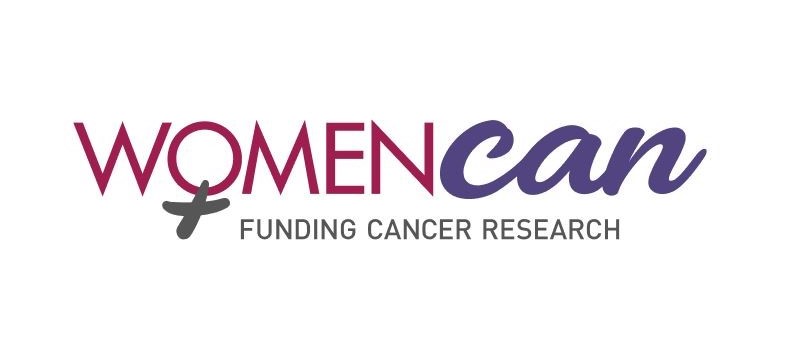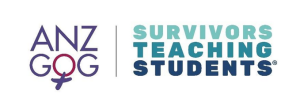ANZGOG is a world leader in gynaecological cancer research. We have conducted close to 40 trials, treating 3,000+ patients over the last 20 years. ANZGOG can help you with your discovery of a clinical trial with the information below:
What is a clinical trial?
All new treatments have to be scientifically proven before becoming available to the general public. This includes treatments and early detection tests for gynaecological cancers.
Trials are designed to:
- Identify the best possible treatment for a gynaecological cancer; or
- Investigate whether a new treatment improves outcomes compared to an existing treatment; or
- Determine the impact of a treatment on the patient’s quality of life; or
- Make new discoveries in prevention and early detection of gynaecological malignancies.
Clinical trials have been the catalyst for new treatments for gynaecological cancer patients.
How does a clinical trial work?

Further information on clinical trials can be found here.
How to participate in a clinical trial
- ANZGOG conducts gynaecological cancer clinical trials to improve life for women. Click here to view ANZGOG’s trials that are currently open to participation.
- The Australian New Zealand Clinical Trials Registry (ANZCTR) is an online registry of clinical trials being undertaken in Australia, New Zealand and elsewhere.
Always speak to your Medical Oncologist about your eligibility for clinical trials.
Resources
-
NSW Govt, Cancer Institute NSW “I have cancer… is a clinical trial an option for me?” website with clinical trial fact sheet in 8 languages (written) and 2 audio languages: https://www.cancer.nsw.gov.au/about-cancer/document-library/i-have-cancer-is-a-clinical-trial-an-option-for-me
-
Produced and available on ACTA website (from the CALDER project “…part of an ongoing interdisciplinary project by University of Melbourne researchers to improve research equity and inclusion of CALD patients in medical research” led to the development and trial of Clinical Trials and You videos ). The videos have been published for broad dissemination: “What are Clinical Trials” video in multiple languages: https://involvementtoolkit.clinicaltrialsalliance.org.au/consumers
Frequently asked questions
ANZGOG gynaecological clinical trials undergo a rigorous review process before becoming active. This ensures the reliability of the research and the safety of the patient.
No gynaecological cancer treatment is guaranteed to be successful and most treatments have a number of side effects, and the treatments given in clinical trials are no exception. However, clinical trials must adhere to a number of safety rules before they are approved by an independent ethics committee. Researchers must ensure that clinical trials are scientifically sound, that they do not produce more harm than good, that they keep patients informed of developments and results, and that they meet internationally agreed standards about the right way to carry out research involving women.
Phase I
Phase I clinical trials involve administration of the research treatment into healthy human participants for the first time. These trials are conducted in a small number of healthy participants to gather information about the safety and potential side-effects the research treatment may cause in the human body. The participants are carefully monitored for the duration of the entire trial.
Phase II
Phase II clinical trials are conducted with a group of participants who have been diagnosed with the disease the treatment was intended for. During a Phase II trial, information is gathered about the safety and effectiveness of the research treatment in these patients.
Phase III
Phase III clinical trials are conducted in a larger group of patients to compare the research treatment with the standard treatment or *placebo
treatment. These trials are used to gather large amounts of information about how the research treatment treats the disease compared to the standard treatment. Governments and other authorities will use this information to decide whether the risks and benefits of the new treatment justify it becoming available to the public.
*Placebo treatment– participants are given an inactive form of the treatment. A placebo is used to test whether the effects being seen in the trial is really due to the treatment itself or just because the participant “thinks” that they are being treated. The human mind is very powerful so the research team must be sure that the treatment is effective and not due to the power of positive thinking.
Treatment Registration – Once a treatment has successfully completed a Phase III clinical trial, the sponsor is able to register the treatment with the appropriate governments. After the treatment is registered, it may become available to the public (dependent on inclusion on the PBS).
Phase IV
Phase IV trials are conducted after the treatment has become available to the public. These trials are conducted to gather information about the safety and effectiveness of the treatment over a long period of time. Information is also gathered to investigate if the treatment can be used in other circumstances. All clinical trials are conducted by an Investigator (doctor) and their research team, consisting of Research Nurses, Study Coordinators, Pharmacists
and other health care professionals.
The protocol identifies:
- The type of trial participants
- All procedures and interventions
- Test schedules
- Medications and dosages
- Study length
- Follow-up processes
- Data collection
- Analysis processes
The protocol is designed to safeguard the health of the participants. Every institution participating in the clinical trial uses the same protocol.
The clinical trial protocol is reviewed by the ANZGOG Research Advisory Committee and scrutinised by a Lead Ethics Committee and the Ethics Committees at each of the institutions that participate in the trial.
An Ethics Committee consists of a panel of scientists, medical professionals and laypersons, who undertake to ensure the ethical and scientific integrity of the trial.
A protocol could be amended numerous times before all relevant ethics approvals are received. It is only once the protocol passes all ethics approvals that the gynaecological cancer clinical trial is opened for recruitment. Once the trial is active, a Trial Management Committee closely monitors the research sites involved to certify compliance with the trial protocol.
To maintain patient safety throughout the trial, patients are closely monitored to make certain any unexpected side effects are detected and treated promptly.
All ANZGOG trials are regularly audited for quality control by independent researchers.
The patient’s “informed consent” is required to participate in a clinical trial.
This means the patient agrees they fully understand what is expected of them, including potential benefits and risks, before they decide to participate in the trial.
The Patient Informed Consent Form (PIC) documents the necessary information for patients to be completely informed about a particular clinical trial.
A patient’s informed consent (PIC) details:
- The research question
- The intervention method
- Possible risks and benefits
- Tests to undertake
- Expected length of the trial
- Any out of pocket expenses
If you are considering participating in a clinical trial, your physician will give you the PIC to review at home with family. You will have to sign the PIC before participating in the trial. The clinical trial team can answer any questions you may have regarding this document. It is a legal requirement for patients to have full disclosure on the gynaecological cancer clinical trial they are considering. Patients have the right to full disclosure of the study status and results at all
times.
There are many potential benefits for a patient who participates in an ANZGOG clinical trial including:
- Having the opportunity to receive a new and possibly more effective treatment than what is currently considered to be the best standard therapy.
- Potentially improving the success of your own treatment, and at the same time knowing that the findings may change the way women with similar cancers are treated in the future.
- Receiving very detailed written information about all treatments and their potential benefits, as well as their side effects. As a general rule, patients on clinical trials receive far more information than patients who don’t participate in clinical trials.
- Being looked after by a clinical trial team including your own doctor, as well as a team of clinical trial nurses and trial coordinators, who will also be closely monitoring your treatment and any side effects.
- Knowing that the trial and the treatments are being regularly reviewed by the research team and that there are strict requirements for following the treatment protocol.
Results of clinical trials are published in various journals around the world so others can learn from them.
ANZGOG regularly updates its publications list, which is comprised of articles and journals that our members have contributed to.





